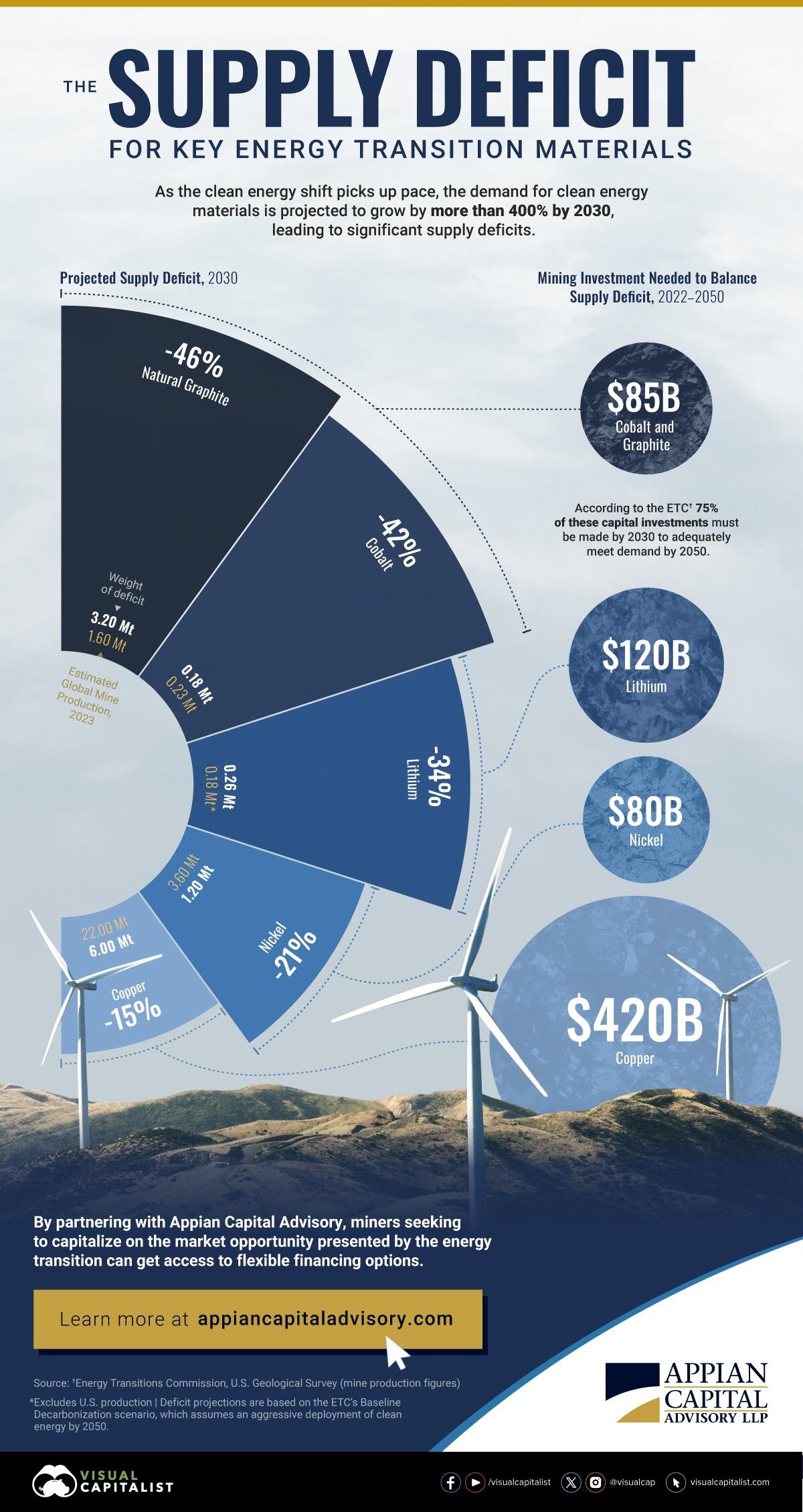Projected Supply Deficits For Key Energy Transition Metals
Tyler Durden
 The demand for clean energy metals will grow by more than 400% by 2030, according to the Energy Transitions Commission (ETC). The demand for clean energy metals will grow by more than 400% by 2030, according to the Energy Transitions Commission (ETC).
Supply, however, is not on track to keep up with this surging demand.
Visual Capitalist partnered with Appian Capital Advisory to visualize what these supply gaps may look like by 2030 and the mining investment needed to balance these deficits.
The analysis uses data from the ETC and U.S. Geological Survey.

What Are the Critical Energy Transition Materials?
Building a clean energy future isn’t just about technology—it’s about materials. The transition to renewable energy will require a vast array of raw metals, such as:
-
Natural graphite and cobalt: Critical for electric vehicles (EVs) and energy storage.
-
Nickel: Critical for battery performance and an important component of wind turbines and green hydrogen technologies.
-
Copper: Required for electrical wiring and expanding transmission infrastructure.
-
Lithium: Central to batteries in EVs and energy storage.
Projected Supply Deficits
Here are the supply deficits expected by 2030 if the mining sector grows at its current trajectory, along with the investments needed to balance these deficits.

Together, the above energy transition materials require more than $700 billion of investment through 2050 to balance their supply deficits.
75% of these capital investments should be made by 2030 in order to meet demand by 2050, according to the ETC.
 our mission: our mission:
to widen the scope of financial, economic and political information available to the professional investing public.
to skeptically examine and, where necessary, attack the flaccid institution that financial journalism has become.
to liberate oppressed knowledge.
to provide analysis uninhibited by political constraint.
to facilitate information's unending quest for freedom.
our method: pseudonymous speech...
Anonymity is a shield from the tyranny of the majority. it thus exemplifies the purpose behind the bill of rights, and of the first amendment in particular: to protect unpopular individuals from retaliation-- and their ideas from suppression-- at the hand of an intolerant society.
...responsibly used.
The right to remain anonymous may be abused when it shields fraudulent conduct. but political speech by its nature will sometimes have unpalatable consequences, and, in general, our society accords greater weight to the value of free speech than to the dangers of its misuse.
Though often maligned (typically by those frustrated by an inability to engage in ad hominem attacks) anonymous speech has a long and storied history in the united states. used by the likes of mark twain (aka samuel langhorne clemens) to criticize common ignorance, and perhaps most famously by alexander hamilton, james madison and john jay (aka publius) to write the federalist papers, we think ourselves in good company in using one or another nom de plume. particularly in light of an emerging trend against vocalizing public dissent in the united states, we believe in the critical importance of anonymity and its role in dissident speech. like the economist magazine, we also believe that keeping authorship anonymous moves the focus of discussion to the content of speech and away from the speaker- as it should be. we believe not only that you should be comfortable with anonymous speech in such an environment, but that you should be suspicious of any speech that isn't.
www.zerohedge.com
| 

